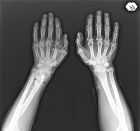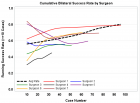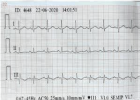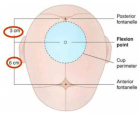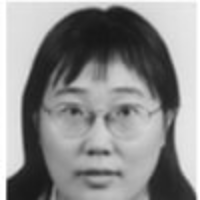Table of Contents
Organic compositional analysis of propellant powders using monolithic material sorption extraction (MSSE)-a feasibility study
Published on: 5th September, 2017
The application of monolithic material sorption extraction, specifically MonoTrapTM, to the extraction of organic gunshot residue (OGSR) compounds from unburnt propellant powders is described. Four different MonoTraps were assessed for their capability to extract OGSR compounds from two different ammunition types. Extracts were analysed using gas chromatography-mass spectrometry. Results indicated that the carbon disc was suitable for the extraction of OGSR compounds from unburnt propellant powders. Quantities for major compounds were comparable to methanol extractions. The method was successfully used to detect a wide range of OGSR compounds, including nitrotoluenes, nitroglycerin, diphenylamines and centralites and is expected to be applicable to a wide range of ammunition types.
Potter Syndrome: A case study
Published on: 31st August, 2017
OCLC Number/Unique Identifier: 7286353788
Potter syndrome (PS) is a term used to describe a typical physical appearance, which is the result of dramatically decreased amniotic fluid volume secondary to renal diseases such as bilateral renal agenesis (BRA). Other causes are abstraction of the urinary tract, autosomal recessive polycystic kidney disease (ARPKD), autosomal dominant polycystic kidney disease (ADPKD) and renal hypoplasia. In 1946, Dr Edith Potter characterized this prenatal renal failure/renal agenesis and the resulting physical characteristics of the fetus/infant that result from oligohydramnios as well as the complete absence of amniotic fluid (anhydramnios). Oligohydramnios and anhydramnios can also be due to the result of leakage of amniotic fluid from rupturing of the amniotic membranes. The case reported below, concerns of stillborn boy with potter syndrome.
The Effect of Cement and wrapping on the Decomposition rate of the Rabbit Carcasses
Published on: 16th August, 2017
OCLC Number/Unique Identifier: 7286357028
Taphonomic study was first time conducted in Kuala Lumpur, capital city of Malaysia. In this research model, male Oryctolagus cunicullus weighed 1.8-2.6 kg each were killed by Dolethal intravenously at the ear region. In Phase 1 study, eight subjects were wrapped in a sack and cemented within a container to be compared with the other four controls at each location labelled A (ground) and B (manmade freshwater pond). Phase 2 involved duplicating set of 15 cemented samples comparable to 1 control made up to total of 32 subjects which were all put into a compact polytank containing freshwater to simulate a case study. Taphonomic changes were observed and scored using TBS system incorporating of fresh stage, early decomposition stage, advanced decomposition stage and skeletonisation stage. The ambient temperature of surroundings with 28.81C±4.21°C and 29.21°C±4.57°C (mean±S.D.) while relative humidity of air with 74.49 %±14.61% and 79.15%±16.32% (mean±S.D.) were recorded for Phase 1 and Phase 2 study respectively. Time taken for ground control exposed and wrapped carcasses to reach first sign of skeletonised stage were four days and five days respectively. Whilst freshwater controls reached initial skeletonised stage within one week for exposed carcass and two weeks for wrapped carcass. Within the control and cemented sample carcasses, TBS scores increased from initial stages of decomposition and become plateau after advanced decomposition. The cementing factor have superseded the wrapping factor due to its stronger physical barrier effect to slow down the decomposition more than half compared to controls based on Multiple way ANOVA test. Phase 2 study has demonstrated more accurately on the decomposition rate of the cemented samples. It showed that wrapping and cementing factors have delayed the decomposition process of the rabbit carcasses about 4 times to reach the initial stage of skeletonisation compared to the control carcasses. There was absence of insect activity within the cemented samples, hence the microorganism activity would be the only contributor to the decaying process within the cemented samples at slower rate comparing to the exposed or wrapped controls.
Comparison of Vitreous Protein Profiles of Rabbits subjected to Acute Carbon Monoxide poisoning and normal animal after death
Published on: 6th June, 2017
OCLC Number/Unique Identifier: 7286357384
Acute carbon monoxide (CO) poisoning is caused by the inhalation of large quantity of CO within short time leading to morbidity and mortality. In this study, a total of eighteen (18) rabbits were divided into three (3) groups of six (6) animals each. The first group first group was poisoned with CO and labelled carbon monoxide death (CD). The second group of animals was killed prior to exposure to CO and labelled disguised death (DD), while the third was the control group (CG). The vitreous humour samples were collected from all the animals using standard methodologies. The vitreous humour total protein and albumin were estimated while its globulin content and albumin/globulin ratio were derived mathematically. Pearson correlation analyses were used to establish relationships between vitreous protein profile components and the acute graded carbon monoxide concentrations. Results indicated a significant increase (P<0.05) in vitreous total protein and globulin of the studied groups. This observation was more pronounced in the CD group of animals. Therefore the marked elevation of vitreous total protein and globulin may serve as a useful tool in the confirmation of death due to carbon monoxide poisoning.
Anatomical Distribution of Intramuscular Lipomas
Published on: 19th April, 2017
OCLC Number/Unique Identifier: 7286426158
Lipomas are the most common type of soft tissue tumor occurring in the subcutaneous tissue. Rarely, lipomas present in the deep soft tissue such as intermuscular, intramuscular, and parosteal sites. When they occur within a skeletal muscle they are called intramuscular lipomas. Intramuscular lipomas may involve both children and adults. They are benign, nontender, deep located, circumscribed but unencapsulated lesions. Intramuscular lipomas account less than 1% of all lipomas. Most are located within a single muscle (solitary), while cases involving two or more muscles are very rare. They present with typical histological features. They may be divided into the infiltrative, the well-circumscribed and the mixed type. Differential diagnosis of the infiltrative type from liposarcoma is very difficult. Local recurrence may be evident if the surgical margin is not clear. They can occur in almost any anatomical site [1-15].
Associations of Burnout, Secondary Traumatic Stress and Individual Differences among Correctional Psychologists`
Published on: 25th January, 2017
OCLC Number/Unique Identifier: 7286351074
Objective: The aim of the present study was to examine associations between secondary traumatic stress (ST), job burnout (BO) and several psychological variables such as world assumptions and locus of control in correctional psychologists.
Methods: This study utilized information provided by 87 currently prac¬ticing correctional mental health providers (psychologists) in the correctional settings across Russia in St.-Petersburg, Belgorod, Vladimir, Kaluga, Ryazan, etc. The sample included 51 men, 36 women. The mean age of participants was 34.9±6.9 (ranging from 25 to 48 years). Participants reported working a mean of 6.23±3.5 years (ranging from 3 months to 15 years) in a correc¬tional setting. Subjects were assessed with Maslach Burnout Inventory-Human Services Survey (MBI-HSS), Secondary Traumatic Stress Scale (STSS), World Assumption Scale (WAS) and Locus of Control (LC) Scale. Three sets of statistical analysis were provided: ANOVAs between- group comparisons with STS and BO as factors and Spearman correlation analyses.
Results: The results of our study reveal that burnout and secondary traumatic stress in correctional psychologists are significantly positively related and thus may be exacerbated by each other. BO is significantly negatively associated with WAS benevolence scale and the WAS self worth scale and STS is significantly negatively associated with WAS benevolence scale and the WAS meaningfulness scale. However, LC and its components are negatively associated with BO, but not with STS.
Conclusion: The main future direction of our research is to construct nonlinear model of burnout with STS, WA and LC components as predictors, identify its parameters and make its validation.
WMW: A Secure, Web based Middleware for C4I Interoperable Applications
Published on: 19th January, 2017
OCLC Number/Unique Identifier: 7286357212
Modern-day enhancements in Enterprise Architectures (EA) has increased the interoperability issues in almost all domains; these issues are increasing day-by-day as organizations are spanning and information is being exchanged between different platforms. Command Control Computer Communication and Intelligence (C4I) complex systems are also facing the interoperability issues due to highly classified and sensitive information being exchanged. In this paper we have discussed the integration of different C4I applications running under heterogeneous platforms by allowing them to communicate using a secure and ciphered web based middleware named as Web Middleware (WMW). This middleware is a client-server based web adaptor to achieve clean, systematic, secure and reliable communication. The main feature among many is the simple HTTP browser based customization that do not require any specific or special add-ons and controls to be installed on the client machine. Architecture usage, and initialization of the WMW middleware is discussed with security and performance discussion.
Poly-dopamine-Beta-Cyclodextrin Modified Glassy Carbon Electrode as a Sensor for the Voltammetric Detection of L-Tryptophan at Physiological pH
Published on: 9th January, 2017
OCLC Number/Unique Identifier: 7286355385
The main purpose of this report was to develop application of poly-dopamine-beta-cyclodextrin modified glassy carbon electrode (PDA-β-CD-GCE) towards electrooxidation and determination of L-Tryptophan (L-Trp) and also the evaluation its kinetic parameters. In continuation of our efforts to use PDA-β-CD-GCE for amino acids detection, our objective in the present work was to expand application of this sensor for the determination of L-Trp which is very sensitive.

If you are already a member of our network and need to keep track of any developments regarding a question you have already submitted, click "take me to my Query."






